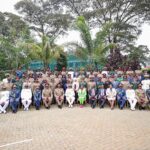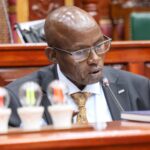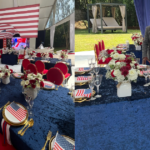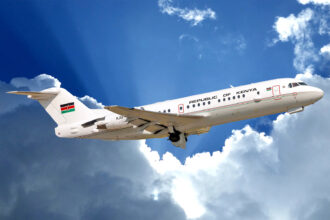A state visit in Kinshasa Congo…A Summit in Rome Italy…A stop Over in Dubai, UAE…A quick meeting in Kisozi, Uganda.
The ability to travel at short notice is an important part of a presidential work schedule.
President William Ruto, as of May 2024, has made nearly 60 foreign trips, majority using Kenya’s presidential jet, the HARAMBEE ONE.
HARAMBEE ONE: Kenya’s most vital, protected, and well-maintained aircraft, is the equivalent to America’s Air Force one…Owned, maintained and run by the Kenya Air Force.
Whenever this plane is carrying the president, it uses the callsign “KENYA 01”. The plane is a symbol of sovereignty, of power.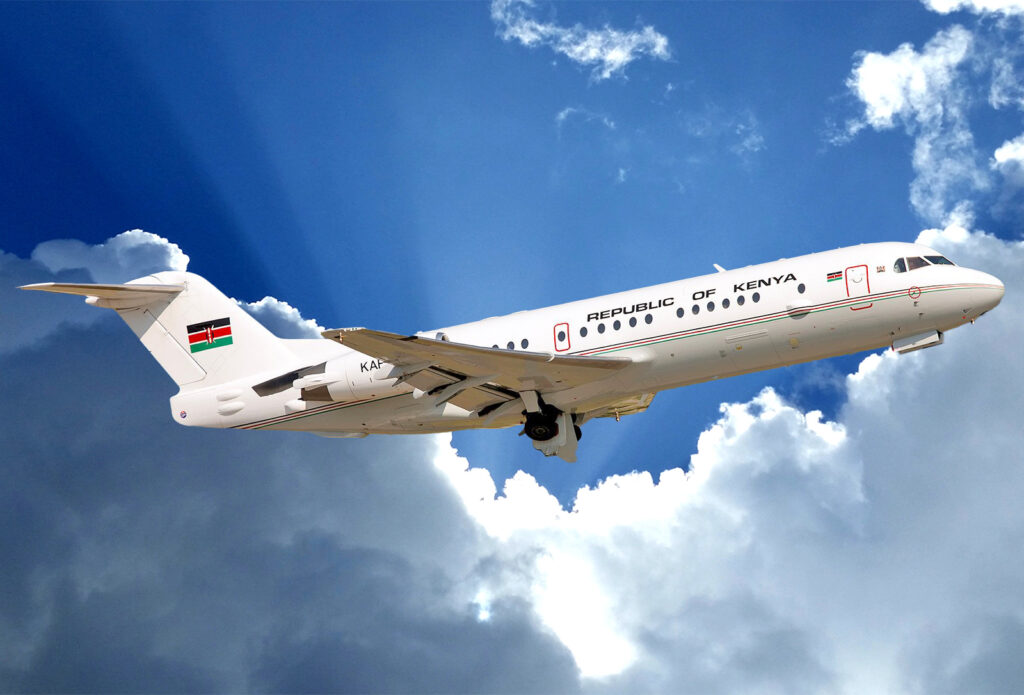
While World leaders and heads of state and government arrive at regional and international meetings on massive four-engine planes, others, like our president William Ruto, travel on smaller and older jets or fly commercial.
Presidential planes are one of the perks of holding a country’s top post.
Kenya, is one such country that currently uses an aging presidential jet – The Fokker 70 Extended Range (ER).
Kenya’s presidential jet, a Fokker 70 ER nicknamed Harambee One, has served the nation for 29 years as of 2024.
While it has faithfully transported four of Kenya’s presidents on domestic and international trips, questions linger about its age, safety, and efficiency compared to newer models used by other world leaders.
In addition, for its use in some of the international trips, HARAMBEE ONE is also used for short flights between Nairobi and Mombasa, or President Ruto’s hometown of Eldoret.
First delivered in 1995, the Fokker 70 ER is a medium-range, twin-engine jet built by the Dutch company Fokker.
The Fokker 70 ER offers a comfortable cabin typically configured for around 26 VIP passengers, however, this is significantly less than some world leader’s jets.
It has a range of approximately 4,000 kilometers allowing the president to comfortably have regional travel around Africa or to the Middle East, but for it to have long-haul trips might require refueling stops.
Normally, while the president is doing intercontinental travel, he uses it to Dubai where he then boards a commercial plane from there.
In comparison, Air Force One, the US presidential aircraft, is a sophisticated customized jet with a much larger passenger capacity, extended range, and advanced communication and protective systems.
Since taking office in 2022, President Ruto has reportedly used Harambee One for numerous domestic trips and a handful of international visits within Africa.
The government owned jet is registered under the Kenya Air Force and bears Military aircraft insignia to visually identify it internationally.
It has the Aircraft registration code for Kenya Air Force KAF308, plus a display of the Kenya fin flash displayed on the aircraft fin or tail. In addition to the military insignia it also has the REPUBLIC OF KENYA wording boldly displayed on the fuselage.
Did you know that the Kenya Air Force also operates 3 other presidential jets that are used to transport high-profile government officials, including the deputy president, prime cabinet secretary and other top government officials or designated passengers?
All aircraft, including HARAMBEE ONE, are operated and maintained by the Presidential transport squadron of the Kenya Air Force that is in charge of flying the president and other VIPs.
The planes are housed by the squadron, either at Jomo Kenyatta International Airport in Nairobi, or one of their Forward Operating Bases (FOB) based in an airport within Kenya where the president is scheduled to travel.
The death of Chief of Defence Forces General Francis Ogolla in a helicopter crash on April 18 2024, raised a series of concerns and safety-related issues within the fleet of aircraft owned and run by the Kenya Air Force.
The incident has not only shaken the reputation of the Kenya Air Force but also cast doubt on the mechanical integrity, among some of the aircraft owned by the Kenyan military, that is arguably the best in Eastern Africa…Ethiopia is the only country around that can challenge Kenya’s military strength.
Top Kenyan Government leadership and the military aviation, faces a problem of having a growing number of aging aircraft, taking to the skies.
While Maintaining older jets offers economic advantages, it also presents its own problems and risks.
It’s within this background that we take a look at Kenya’s presidential Jet, HARAMBEE ONE that is close to hitting 3o years of service.
Bought in 1995, at a price of a whopping 2.75 billion shillings, during President Daniel Moi’s tenure, the plane has served its time and could be facing retirement or getting lighter duties if word around government machinery is anything to go by.
While Chronological age doesn’t really matter in aircraft, the performance of HARAMBEE ONE matters because the Dutch aircraft manufacturer, Fokker is no longer operating after closing shop in 1996, which means, general servicing and repairing or replacing broken parts, can only be done by third party companies.
The HARAMBEE ONE has a few incidents about it reported but it is public knowledge how at one time the President Daniel Moi was kept waiting at the Airport for close to five hours after its doors jammed. It’s reported that President Uhuru Kenyatta once abandoned a foreign trip and flew back to Kenya while enroute to Dubai after the jet developed mechanical problems.
Kenya Air Force Engineers on their part, conduct regular daily checks, and organize for sourcing of parts from manufacturers.
Studies have shown that airplanes more than 20 years old have a weak correlation between age and accident rates.
That said, it’s important to note that what really matters on the safety of the aircraft, is not the age of the aircraft, but how well it’s been maintained.
Components such as engines, wiring, structural elements and instrumentation may experience wear, corrosion, structural fatigue or other symptoms of aging before the aircraft reaches the end of its life span.
These parts may need replacement or an overhaul to keep an aircraft safe as it ages.
The most critical factors affecting a plane’s life span are flight cycles and flight hours.
The average passenger jet is retired at 23.6 years while a private jet that stays up to date on its maintenance can practically last for more than 50 years.
The current Boeing VC-25 jets that the United States uses as Air Force One are currently over 30 years old and were first flown during President George Herbet Walker Bush’s administration between 1989-1993.
The US presidential aircraft fleet currently consists of two Boeing VC-25 wide-body planes, which are configured as military versions of Boeing 747-200B airliners.
Now Let’s Go Back to HARAMBEE ONE…Dutch aerospace manufacturer Fokker, produced 47 examples of its Fokker 70 regional jet during the early to mid-1990s.
According to data from an aviation industry monitoring website, there are presently 20 active examples of the Fokker 70 left in the world.
While most of the Fokker 70’s currently operating are run by commercial carriers, only three active Fokker 70s left in the world today, belong to military operators, one being HARAMBEE ONE which has belonged to Kenya’s government since entering service in 1995.
Production for this specific model ceased production in 1997, making HARAMBEE ONE a true veteran of the skies.
The other two active Fokker 70s belong to the Myanmar Air Force.
Plans for a new plane have been in the works for a while, but the Kenyan government has not yet announced any plans to replace HARAMBEE ONE.
However, recent and ongoing discussions highlight the potential benefits of a safer, newer, more fuel-efficient, and technologically advanced aircraft.
The final decision will likely be influenced by Kenya’s economic situation considering the country faces huge budgetary constraints.
Buying a pre-owned private jet could be a possible option, but that also undermines the dignity of the presidency.
Kenya could have a new presidential jet, but that may take a few years, if the government has not yet initiated the sourcing and procurement process.
Most aerospace manufacturers have long waiting lists as most are unable to keep up with demand from the rich around the world who keep ordering for private jets.
Clients who need brand new personal jets, make orders, pay their deposits and wait for as long as two to 5 years, depending on customizations and market demand and supply dynamics.
While HARAMBEE ONE has been meticulously maintained by the Kenya Air Force, some argue that a newer aircraft might boast more advanced safety features and technologies for transporting the head of state.
Its age raises concern about access to spare parts and potential maintenance challenges.
Leaders of major powers like the US utilize jets specifically designed and outfitted for maximum security and advanced communication capabilities.
In Africa, the fleet of presidential planes is diverse, with some leaders of struggling countries opting to fly commercial during their trips.
Let us look at how Presidents in Africa Travel.
The Nigerian Air Force currently maintains a Boeing Business Jet (737) as the primary means of transport for the President of Nigeria. The aircraft is known as “Eagle One”.
Paul Kagame of Rwanda leases a Qatar Executive Gulfstream G650ER for his travel.
Ivorian President Alassane Ouattara, for instance, reportedly has ten airplanes in his presidential fleet.
East Africa’s strong man Yoweri Museveni has in his fleet the latest gulfstream v
On the other hand, some African leaders – such as Cameroon’s Paul Biya – prefer to charter luxury planes.
The South Sudan government currently charters planes from RwandAir and Kenya Airways for use by Salva Kiir.
Tanzania Government operates a Gulfstream G550, a Fokker F28-3000 and a Fokker 50 for use by President samia Suluhu but also flies national carrier Air Tanzania.
The Ethiopian government uses various aircraft from Ethiopian Airlines for travel.
The South African president travels in Boeing Business Jet (BBJ / Boeing 737) aircraft operated by the South African Air Force.
Word is that the aircraft may be retired soon for use by the head of state but will not be decommissioned but remain in use for lower cadres of government officials and for use in local trips.
Various operators, Kenya included, have indicated to keep their Fokker 70s in service beyond 2030.
The Fokker 70 ER has served the country well, but its age cannot be ignored. The debate surrounding Kenya’s presidential jet continues.


